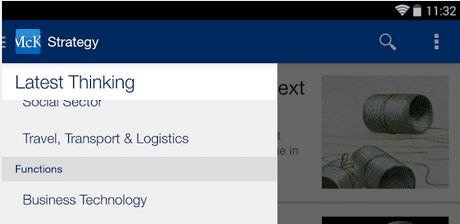Why Good Sourcing is essential
Build your work on solid ground
When conducting analysis, you will very often find it necessary to use external data. When you do this it is essential to ensure you have reliable data:
- You want your analysis to be based on solid ground. Your analysis is only as strong as its data. The data is the foundation on which everything else is built. If your data is wrong or flawed in any way your analysis could be worthless, or worse dangerous. The thought of spending days rigorously analyzing bad data is almost to much to bear. Even worse, imagine drawing conclusions based on incorrect data and dermining a new strategy based on false foundations. The results of this could be disastrous.
- You will probably share the results of your analysis with an audience. Your goal will be to persuade your stakeholders. Therefore the source of your data needs to confer credibility on your work. It needs to come from a trustworthy source that your audience will acknowledge as such. Any slightly unreliable source, any tiny mistake in your data spotted by your audience will suggest doubts about your entire work.
With respect to both these things it is absolutely crucial that your statistical underpinnings are beyond reproof.
This leads on to the question of :
What are reliable source?
Government sources
Government sources from many countries can be considered to be the gold standard in both reliability, range and credibility. When dealing with countries that you feel are less open with their data you can check. For example the Transparency International website is helpful to determine trustworthy governments from more corrupt governments.
Private sources
Many private data sources are also imbued with immense trustworthiness too. One example of this would be Bloomberg, which is the default data provider for financial firms. When thinking about whether to use a source or not it’s a good idea to think about how widespread the use of this source is in your industry. If you’ve never seen it used, it might be worth thinking carefully before using it yourself. A good question to ask is ‘would I trust this if I saw it cited in someone else’s presentation?’.
One modern phenomenon is the use of Wikipedia and other online sources for our information. Many people who grew up as part of Generation Y will have been instructed countless times by professors and teachers that they must be wary of using Wikipedia as a source. However, we all use Wikipedia, many of us every day, and know it to be an invaluable resource. The trick is to use it effectively and wisely. Never use Wikipedia as a source when the information you need has no citations. And when you can use Wikipedia, always use their citations to access the primary source – which you can then cite as your source.
Always footnote your work
When your information has come from elsewhere it is vitally important that you acknowledge where it has come from in your footnotes. As we mentioned earlier it is crucial for the integrity of your work. It is also very convenient when you want to proofcheck your work later.
Your footnote should contain the source of your work (the data provider) and the date of the data. When retrieving data from the internet, it can be useful to add a link to be able to refer to it quickly. If you have done any work to manipulate, extrapolate or estimate based on the raw data, you should footnote this too.
Illustration

Zoom:










Leave a Reply
Want to join the discussion?Feel free to contribute!